Talk to a Registered Dietitian and use INSIDER20 for 20% off!
Talk to a real Dietitian for only $99: Schedule Now
This post contains links through which we may earn a small commission should you make a purchase from a brand. This in no way affects our ability to objectively critique the products and brands we review.
Evidence Based Research To fulfill our commitment to bringing our audience accurate and insightful content, our expert writers and medical reviewers rely on carefully curated research.
Read Our Editorial Policy
The general public is becoming increasingly aware that frequent consumption of processed foods may not be all that healthy for you. Understanding why, though, can be more complicated.
Packaged foods––like the ones on this list, for example––contain common food additives that food companies use for a variety of reasons but primarily to enhance flavor and texture, improve food’s appearance, and extend shelf life.
However, there have been many instances over the decades of food production where some ingredients have been found to be toxic and carcinogenic.
This leads many consumers to be continually skeptical and concerned about the current contents of our food––especially those of the ultra-processed varieties.
Though the FDA is confident about the safety of many food additives, other countries are not, leaving many consumers to wonder if there is a potential for serious health problems to crop up later in our lives––or worse, our children’s lives––if they consume this food.
Additionally, many highly processed foods contain excess calories and lack the essential nutrients we need for our bodies to function appropriately.
In this article, we’ll dive into the 15 ingredients we think you could avoid when grocery shopping (or at least consume in moderation). Stick around until the end to read some guidance on what you can eat instead.
Before we dive in, we just want to note that this list is not a hard and fast framework for how you, dear reader, should eat.
For the most part, these ingredients are only harmful if eaten frequently and in large quantities.
Rather, we at The Nutrition Insider hope this list simply helps you make more informed choices when doing your food shopping.
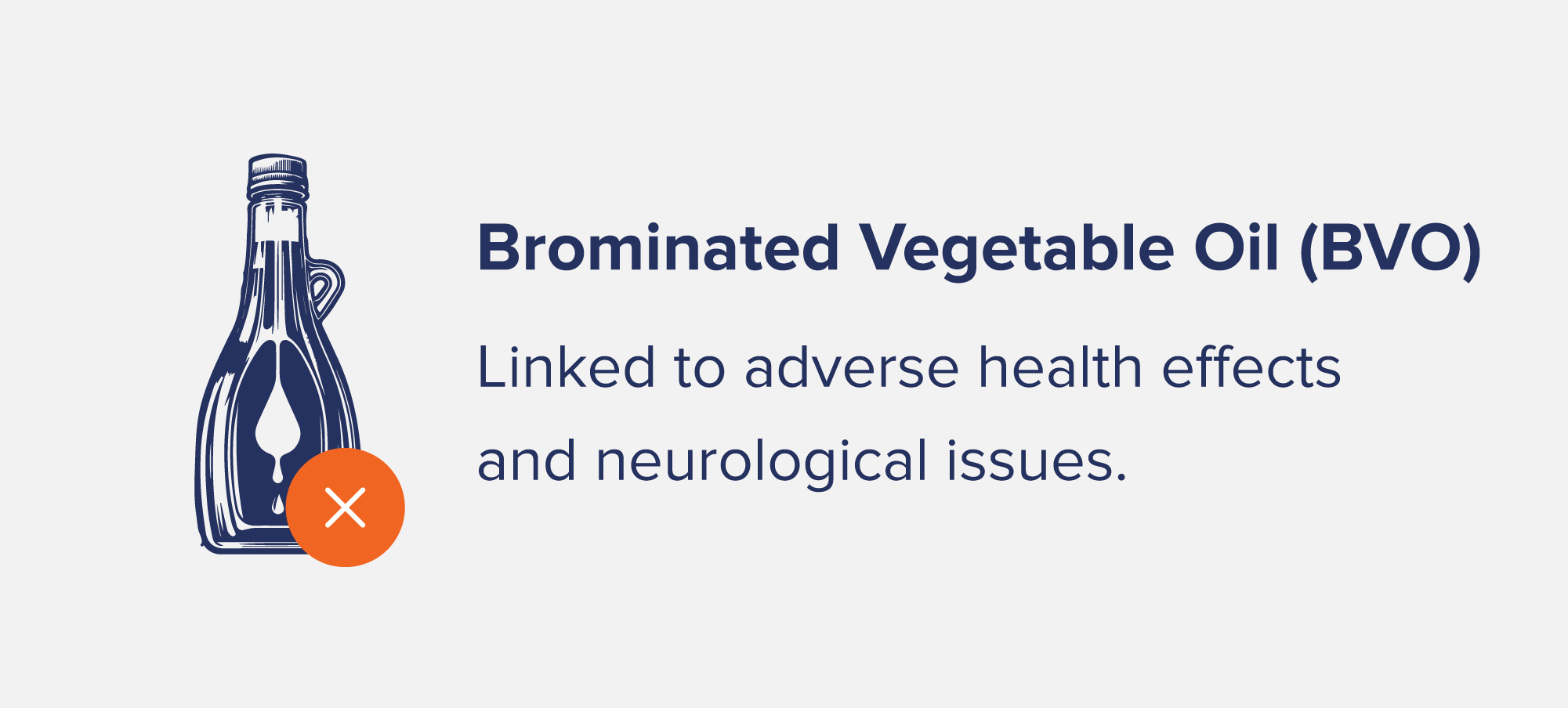
BVO is a modified vegetable oil made with bromine.
It is primarily used in drink products to prevent the separation of citrus flavorings in sodas and juice drinks.
Decades of studies show strong adverse health effects linked to BVO, which has finally led the FDA to propose revoking its authorization for use in American food and beverages.
But why is BVO considered to be bad for you?
Well, many rodent studies have found that bromine may build up as residues in body fat and organs, which can cause bromine toxicity along with neurological effects.
Many major brands have phased out BVO, but it can still be found in some products.
If the FDA passes its new proposed rule, this may prompt reformulation by beverage companies. For now, check labels for products that could potentially contain BVO.
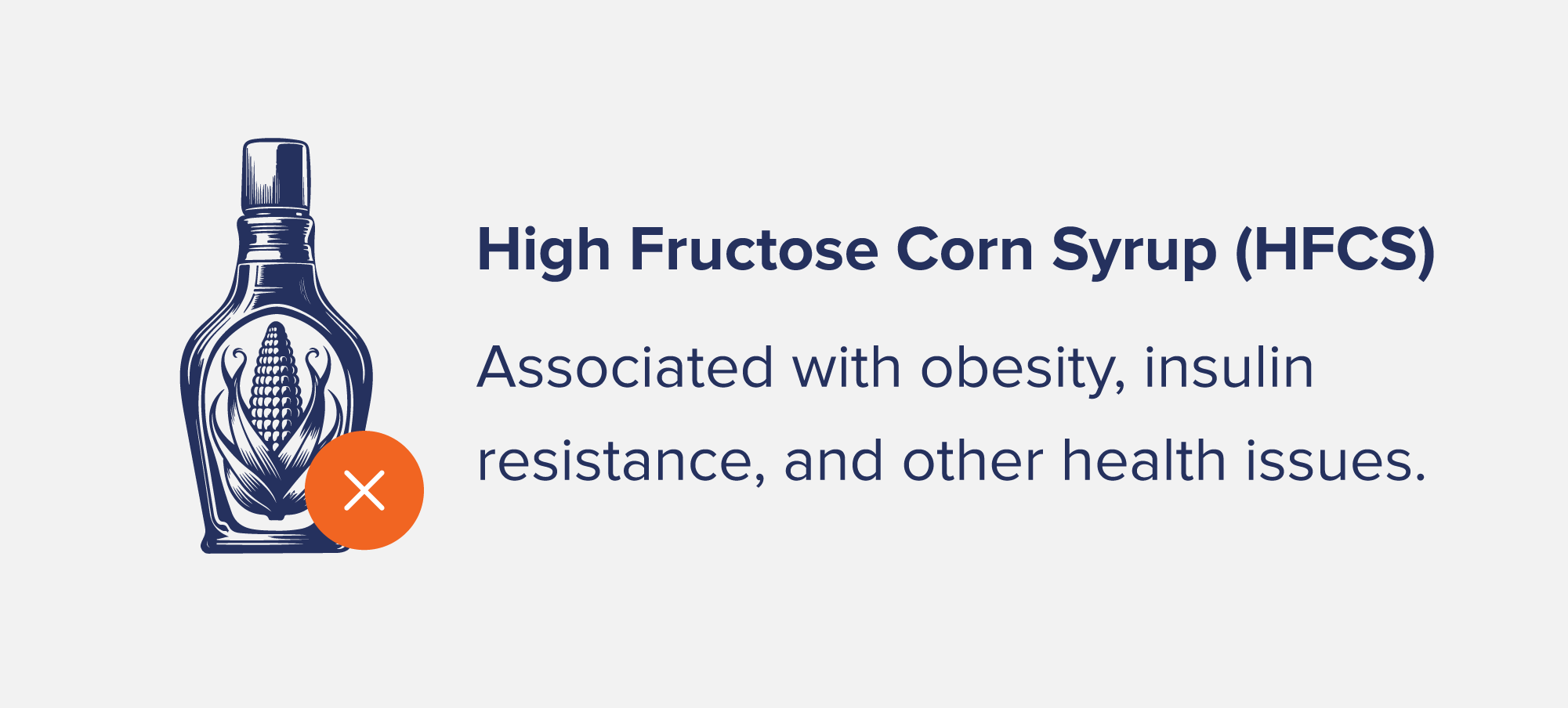
High Fructose Corn Syrup (HFCS) is a sneaky sweetener made from corn that’s found its way into loads of our favorite snack foods and drinks.
Why avoid it?
Here’s the lowdown: HFCS has been connected to things like obesity, insulin resistance, cardiovascular diseases, and even liver disorders.
HFCS negatively impacts our metabolism in ways that natural sweeteners don’t and can lead to a variety of health problems.
It also alters the makeup of our gut microbiome, which we now believe may be connected to a multitude of other bodily systems such as our immune system, brain health, heart health, and more.
Now, we’re not saying we need to go on a crusade against all things sweet, but being more mindful of our consumption of HFCS and avoiding frequent consumption is a good idea.
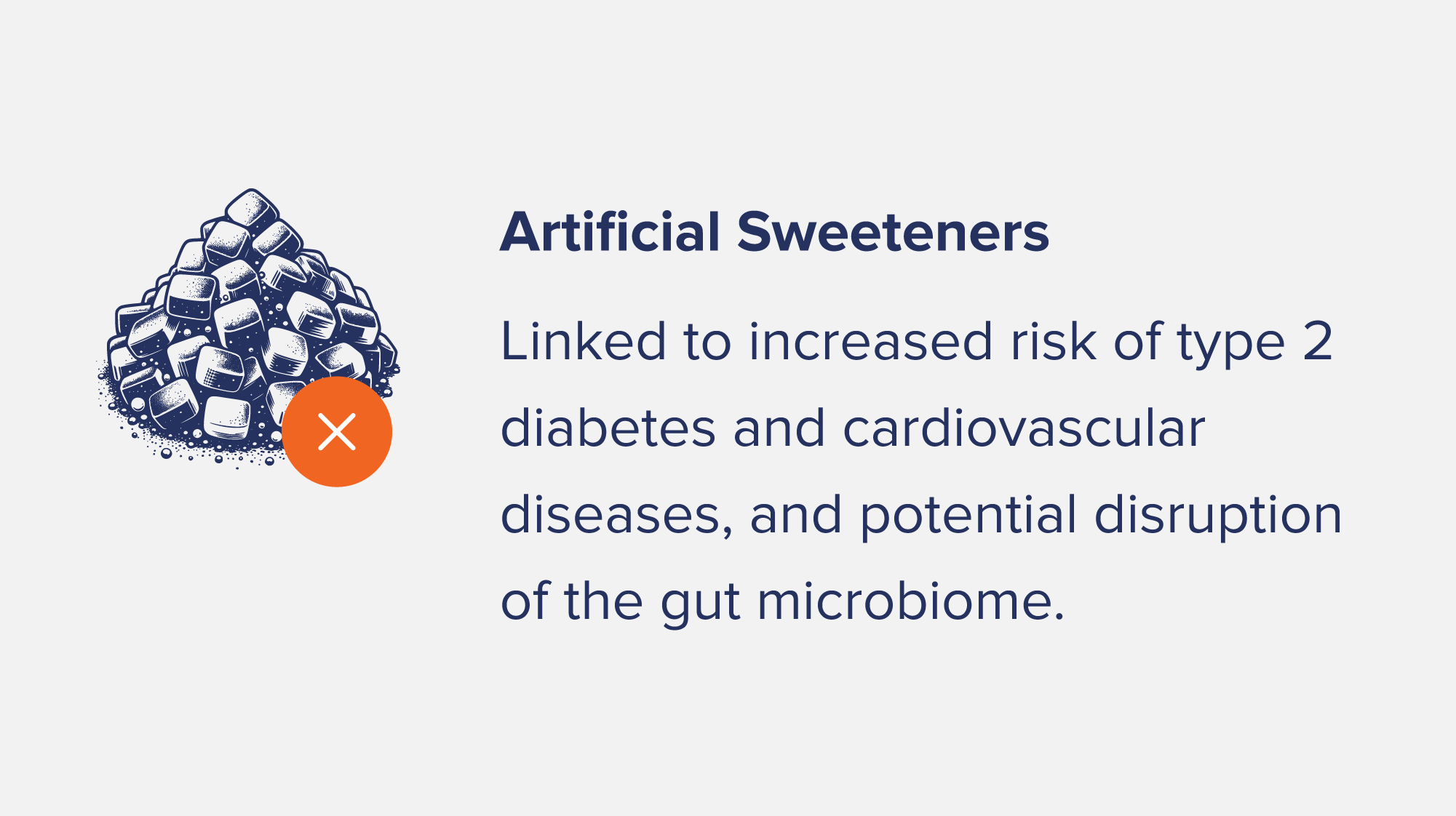
Artificial sweeteners (non-nutritive sweeteners or non-sugar sweeteners) have become very prevalent in diet sodas, snack foods, and desserts as a way to enhance flavor without the added calories.
What are some examples of artificial sweeteners?
Artificial sweeteners have almost always been under intense scrutiny due to certain assertions that they might be linked to cancer. So far, there is no scientific evidence to back these claims.
However, the World Health Organization does advise in recently published (2023) guidelines not to use artificial sweeteners as a tool for weight control.
Long-term use of non-sugar sweeteners is linked to increased risk of type 2 diabetes and cardiovascular diseases. There is also no evidence that long-term use can help reduce body fat in adults or children. There is also some preliminary evidence that artificial sweeteners may upset the gut microbiome, but more research is needed.
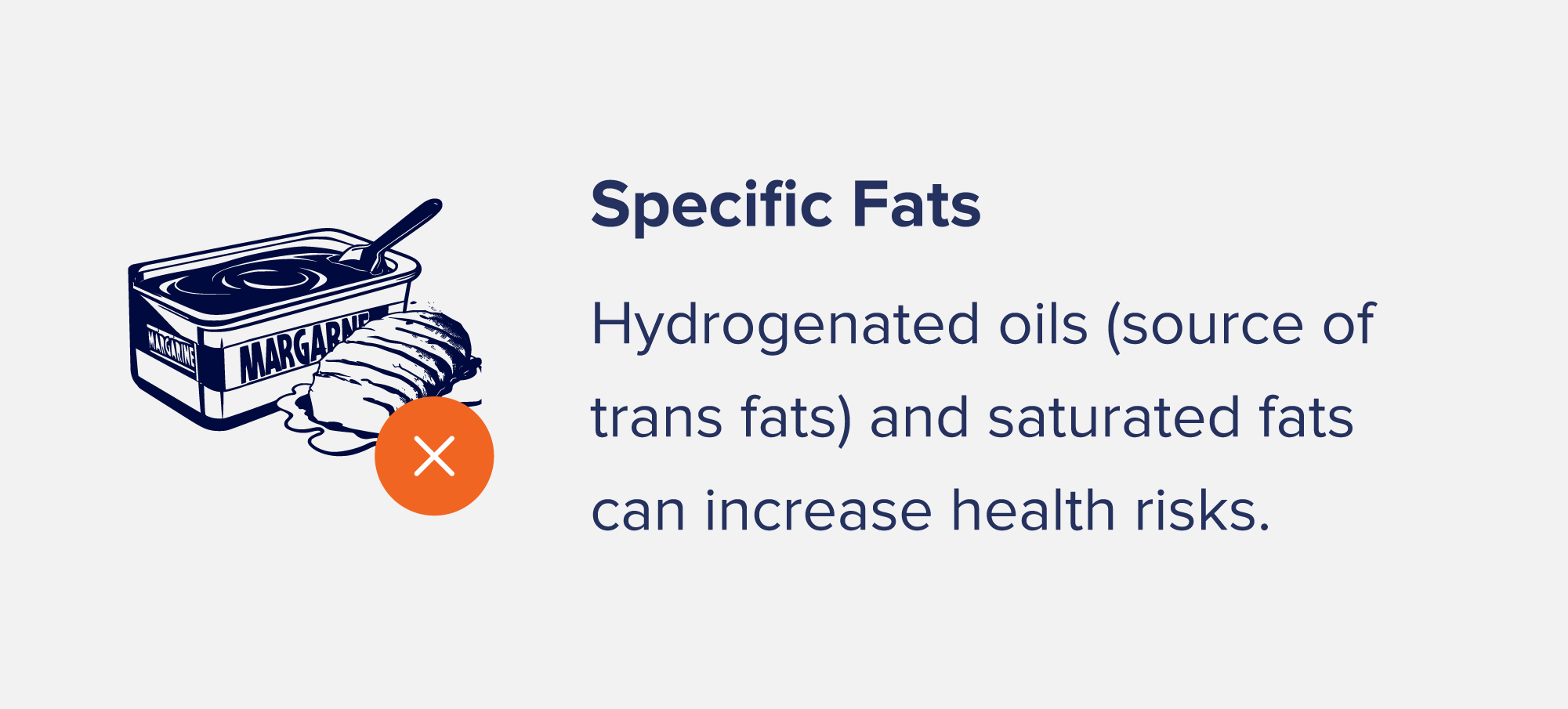
Okay, let’s be clear: we are not demonizing all fats here. Fat is extremely necessary for the human body to function properly and helps us absorb essential vitamins like vitamins A, D, E, and K.
There are plenty of fats that, when consumed in moderation, can be perfectly healthy in a well-balanced diet.
However, there is a plethora––a veritable gravy boatload, if you will––of studies and evidence pointing in every direction about which fats are healthy and which are not.
So let’s break it down:
Partially Hydrogenated Vegetable Oils: Partially hydrogenated vegetable oils are made through a process where the oil is introduced to hydrogen. However, this process creates trans fats, which are well-known to both raise “bad” LDL cholesterol and lower “good” HDL cholesterol. This can lead to increased cardiovascular health risks, raising the chances of a heart attack or stroke.
Hydrogenated Vegetable Oils: As opposed to partially hydrogenated oils, fully hydrogenated vegetable oil is when hydrogen is introduced to a liquid vegetable oil to make it into a solid saturated fat. While fully hydrogenated oils are less unhealthy than their partially hydrogenated cousins, there are definitely still health risks––especially when it comes to heart disease and metabolic syndrome or obesity–– and should be eaten in moderation.
Common sources that both partially and fully hydrogenated oils are found in:
Saturated fats: Saturated fats are naturally occurring fats found in many foods. This includes meat and dairy as well as plant sources such as coconut oil. Eating too much saturated fat can raise your “bad” LDL cholesterol, so it’s recommended to consume it in moderation.
Common sources of saturated fats include:
Unsaturated fats: If you want to improve your health, replacing saturated fats with unsaturated fats––specifically, monounsaturated (MUFAs) or polyunsaturated fatty acids (PUFAs)––is scientifically supported to help lower bad cholesterol. These are the “healthy fats” you hear so much about.
Examples of Monounsaturated Fats:
Examples of Polyunsaturated Fats (includes Omega-3s and Omega-6s):
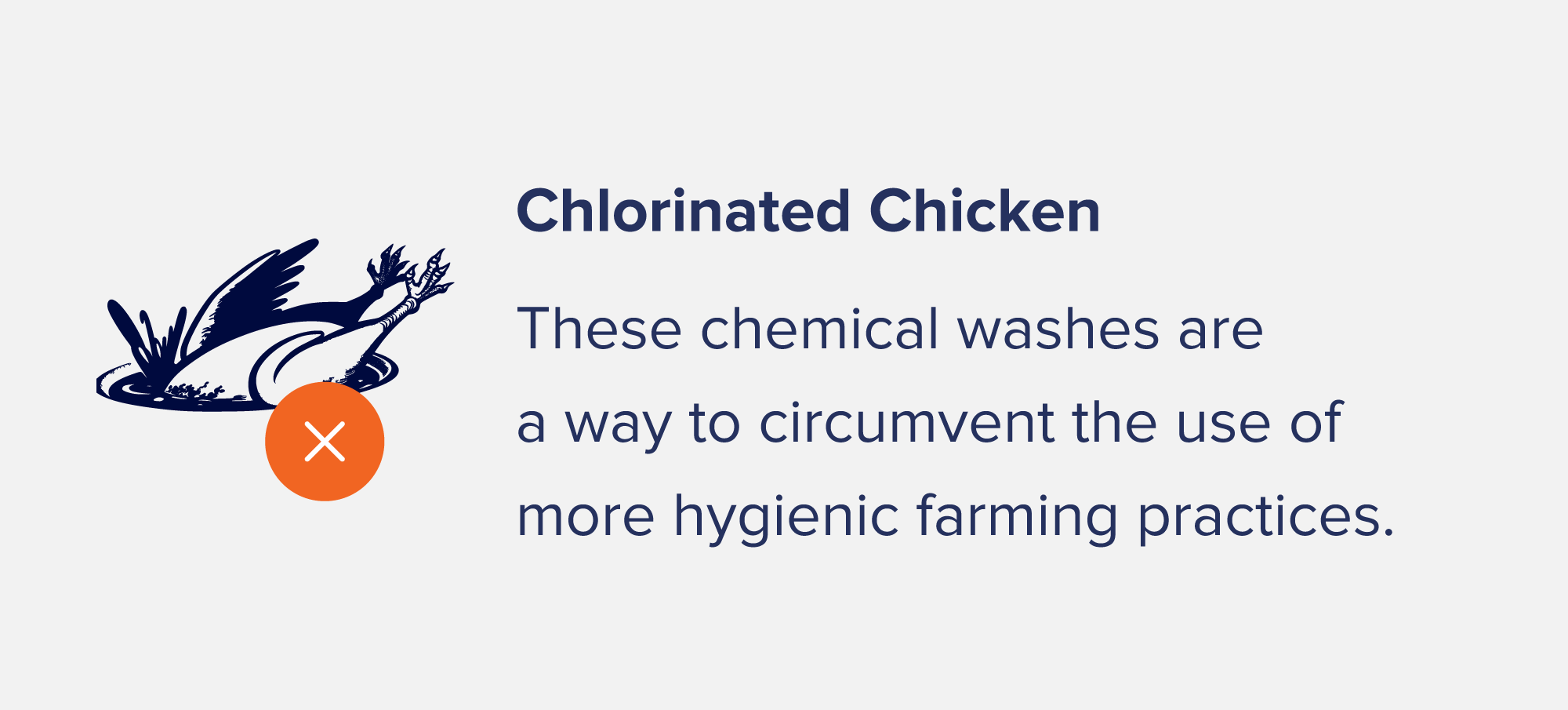
Chlorinated chicken uses an antimicrobial wash to remove harmful bacteria––such as salmonella and campylobacter––from the surface of harvested poultry.
In the US, this is used to protect consumers from infections.
However, chlorinated poultry is banned in the UK and EU because regulatory bodies believe these chemical washes are a way to circumvent the use of more hygienic farming practices.
In other words, by relying on chlorinated washes, farmers and slaughterhouses may not adhere to stringent cleanliness practices, leading to an increased incidence of salmonella and other infectious diseases.
By only allowing processing facilities to use cold air and water to wash and decontaminate poultry, it’s believed that consumers in the EU and the UK could be more well protected.
If you want to avoid purchasing chlorinated chicken, look for products that say air-chilled on the packaging.
This may be difficult to find at your local supermarket chains, but stores like Costco, Whole Foods, and Trader Joe’s do sell air-chilled chicken.
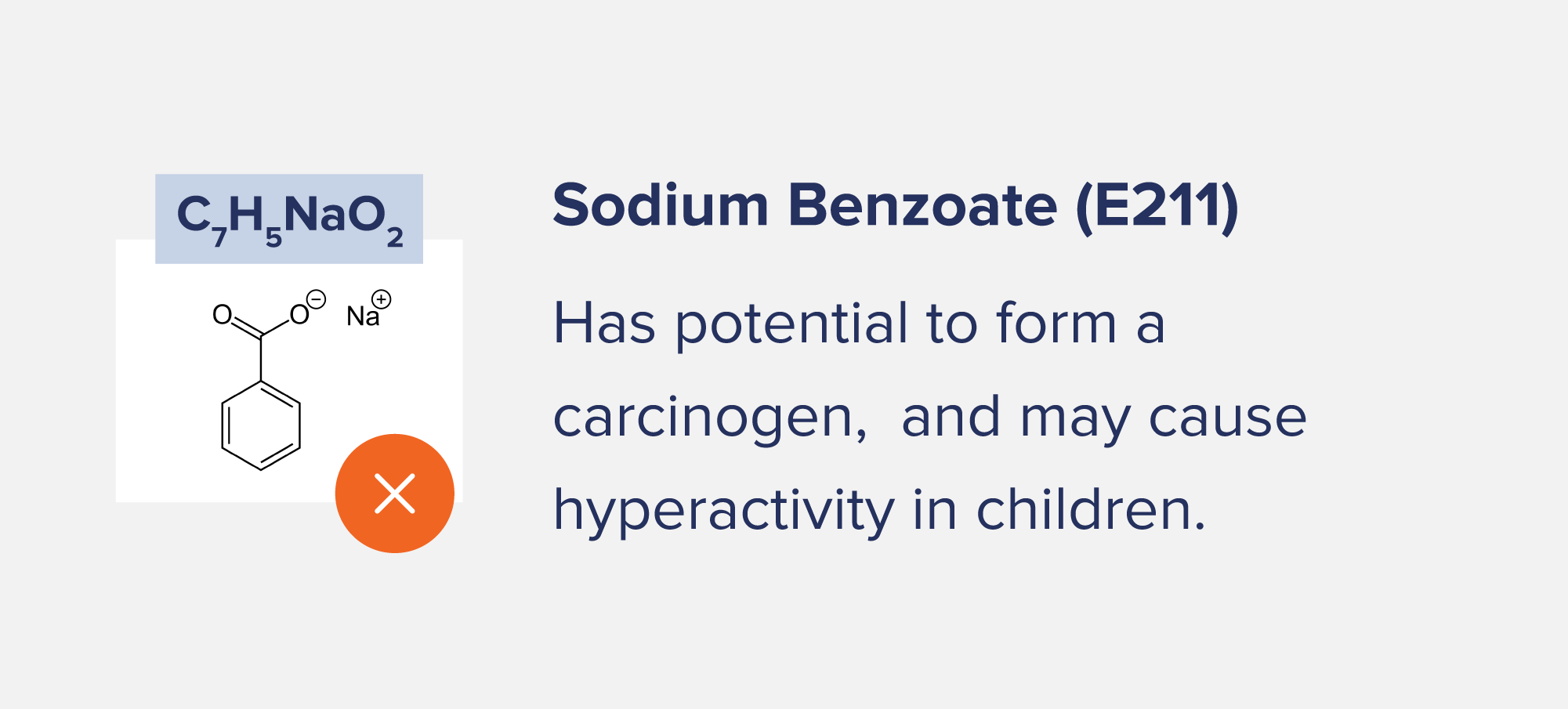
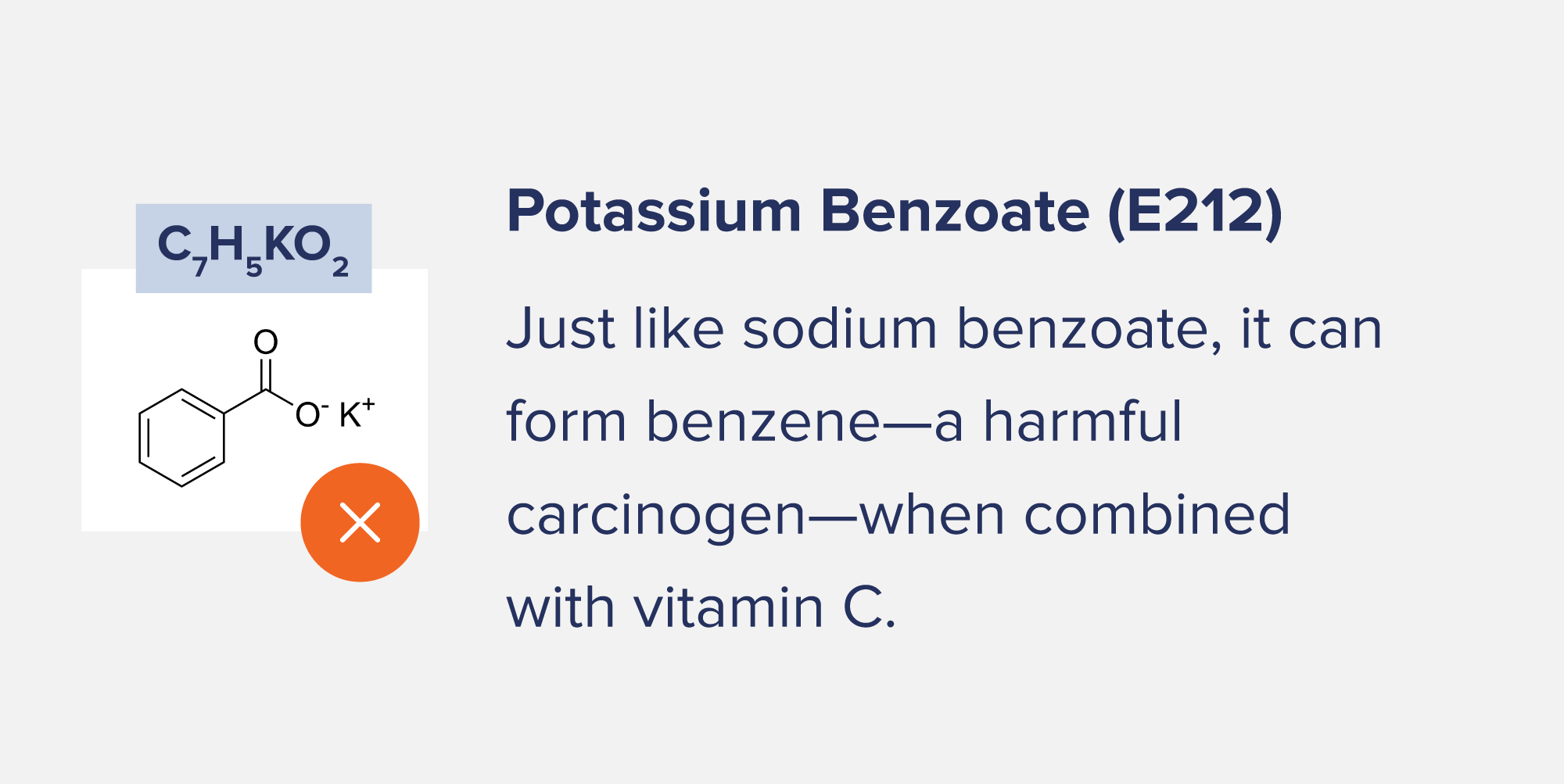
This one is more of a “let’s keep an eye on it” type of thing rather than a full-throttle, “throw it away immediately if it’s in your house” situation.
Sodium benzoate and potassium benzoate are preservatives used in acidic foods such as salad dressings and pickles, as well as syrups, jams, olives, and fruit juice, to prevent the growth of mold, yeast, and bacteria.
Currently, the European Food Safety Commission (EUFS) and the WHO approve the use of potassium benzoate as a safe food additive.
As for sodium benzoate, the FDA considers it to be a safe additive but has not yet given a stance on potassium benzoate.
Some people find it problematic because of the risk when potassium benzoate is combined with ascorbic acid (vitamin C).
This can produce benzine, which can cause hives and allergic reactions in people who already have sensitive immune systems, such as those with eczema and chronic allergies.Sodium benzoate may also lead to hyperactivity in children.
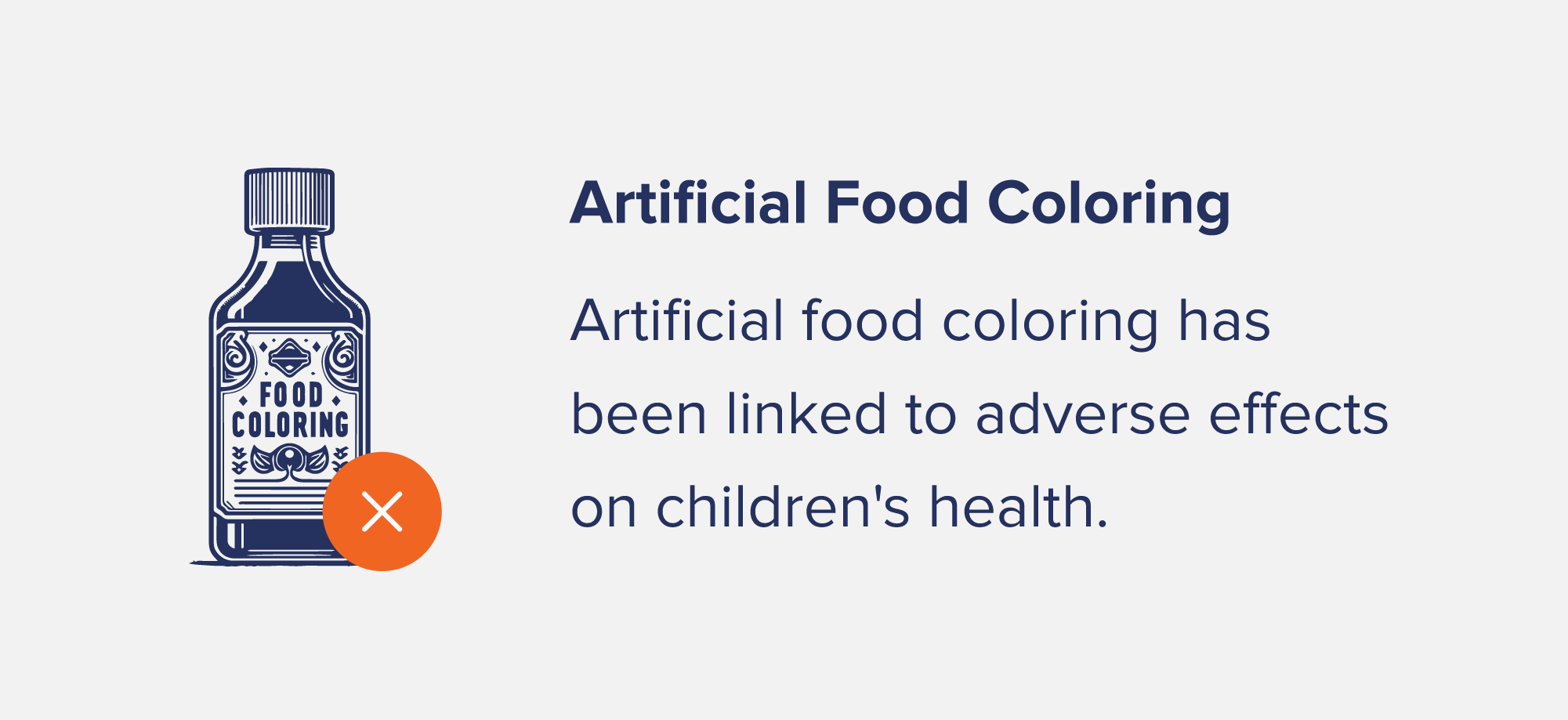
It’s safe to say that some of the most controversial food additives are food dyes.
Though it was once derided as anecdotal hearsay, it’s now well-known and accepted that artificial food colorings such as Red 40 and Yellow 5 can have adverse effects on children.
So much so that, in the EU, products containing these dyes must carry a warning label, and they are not permitted to be used in food marketed towards infants and children.If you want to learn more, here is a summary from the Center for Science in the Public Interest (CSPI) on artificial colors and conclusions drawn from existing studies on each.
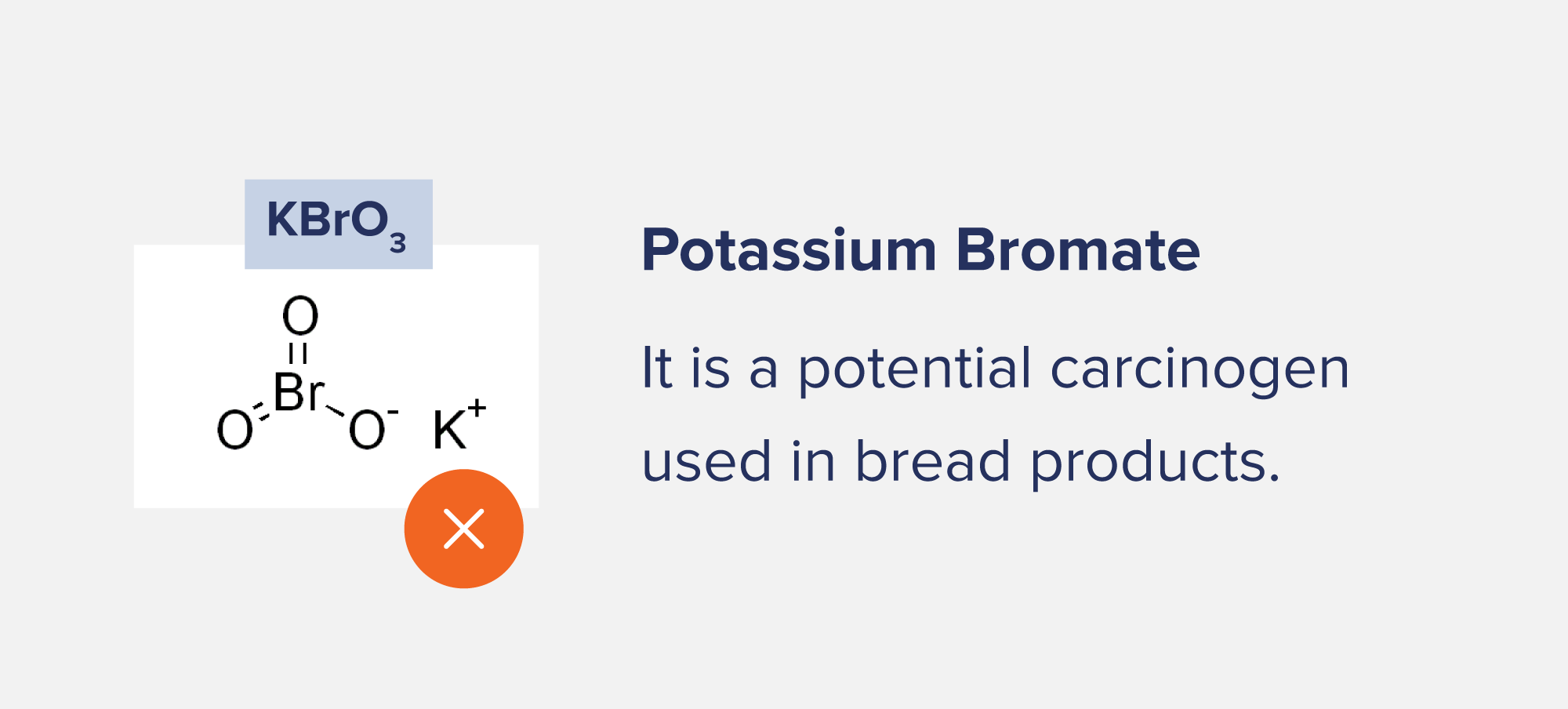
Potassium bromate is a food additive that was once prolifically used in bread products––everything from bagel chips to bread crumbs––as an oxidizer to help bread rise.
After 50 years of research, scientists have discovered that this chemical is linked to various health issues, including cancer, thyroid disease, kidney damage, gut irritation, reproductive abnormalities, renal cancer, toxicity, oxidative stress, genotoxicity, hearing loss, neurobehavioral changes, and disruption of mitochondrial distribution.
That all sounds pretty bad, right?
Maybe even bad enough to outright be banned by the US FDA? Though we think so, the FDA doesn’t agree.
Despite it being recognized as a potential human carcinogen by the IARC (International Agency for Research on Cancer), it is still permitted to be used in the US food supply.
While its use has been slowly phased out by food companies, it may still show up in some food products. So, it’s best to keep an eye out.
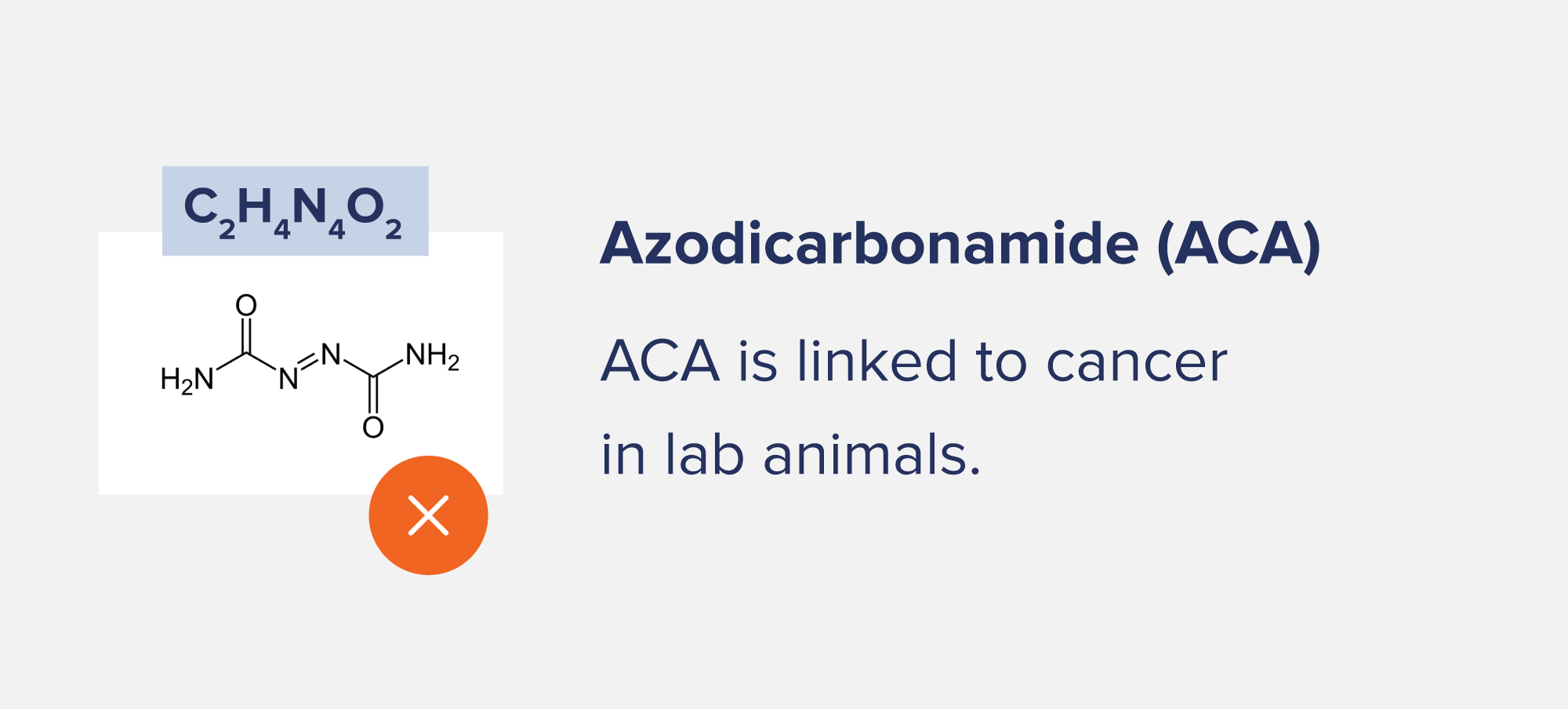
Azodicarbonamide (ACA) is an FDA-approved chemical used in bread as a dough conditioner and bleaching agent.
However, when baked, ACA has been linked to cancer in laboratory animals.
While several countries, including members of the European Union, China, and Brazil, have banned ACA for consumption, the US FDA still considers it “generally recognized as safe” (GRAS).
So, you could spot this ingredient on certain food product ingredient lists.
While the jury is still out on whether or not this is a harmful substance in the US, you could take the extra step to steer clear of it.
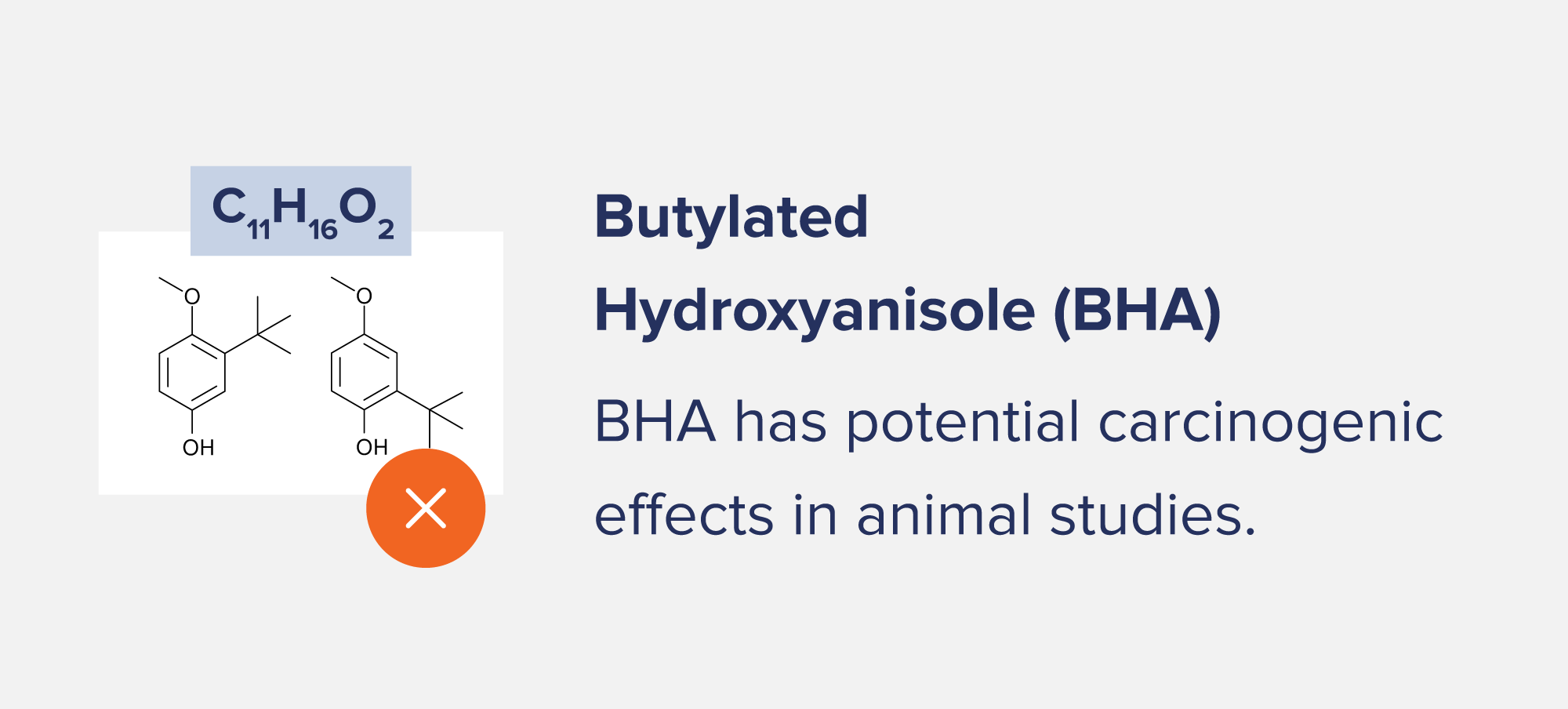
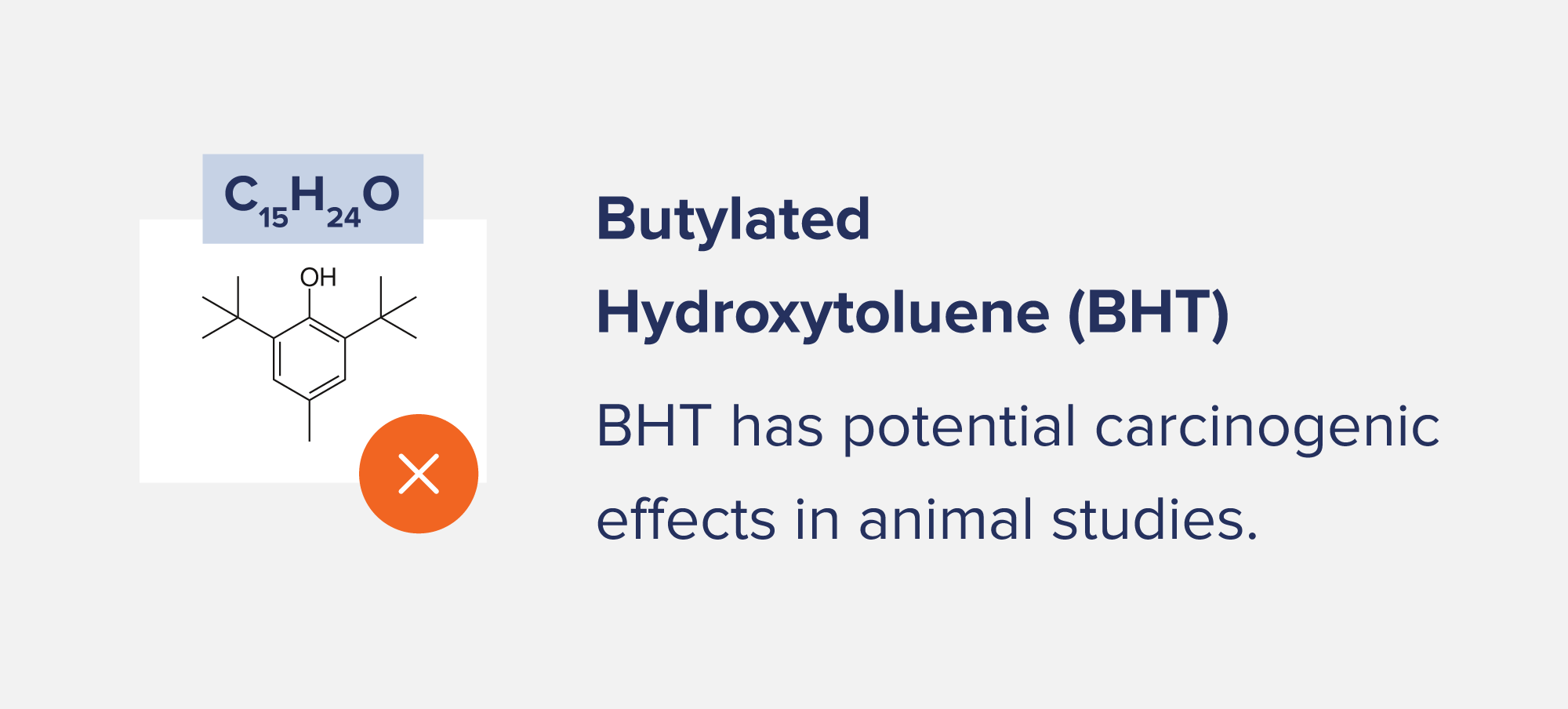
BHA (butylated hydroxyanisole) and BHT (butylated hydroxytoluene) are two preservatives often used in baked goods in the US as emulsifiers that prevent fats and oils from spoiling.
There is also some plastic packaging that also contains BHT to prevent foods with vegetable oils from expiring.
Apart from one rodent study, there is limited evidence that BHT is harmful to humans.
Regardless, other countries strictly regulate its use in the food industry. For example, the EU has imposed strong restrictions on these preservatives, and the IARC suggests there is sufficient evidence demonstrating their carcinogenic potential in animal studies.
The FDA also classifies these preservatives as GRAS (generally recognized as safe) and permits their use. Their argument is that these chemicals are used in such small quantities that they would not affect humans.
Scientifically, this is a sound argument, but the critics’ reply to this is that they do not want any amount of carcinogenic ingredients in their food, no matter how minute.
Until there is more evidence, limiting your consumption of products with these ingredients can’t hurt.
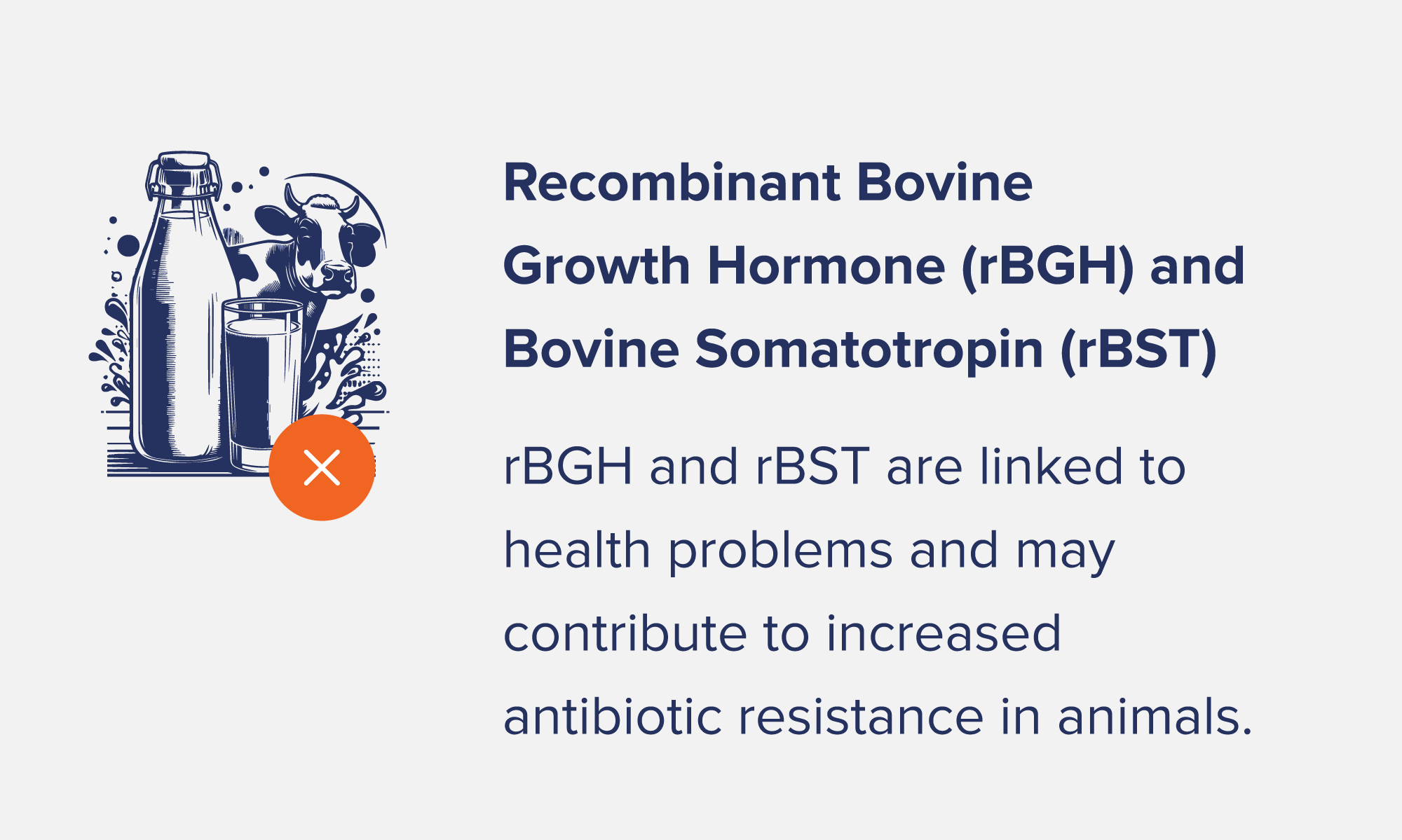
The use of growth hormones is prolific throughout the US dairy industry.
However, outside the US, hormones like rBGH (recombinant Bovine Growth Hormone) or rBST (bovine somatotropin)––which increase milk production in dairy cows––are considered harmful to the welfare of animals and may have negative health impacts on consumers, too.
These growth hormones can cause painful side effects in animals including mastitis, a bacterial udder infection.
This results in farmers using more antibiotics, which can increase antibiotic resistance among dairy cows and, subsequently, the people who consume that dairy.
Additionally, the Codex Alimentarius, the UN body that sets global food safety standards, was unable to come to a consensus on its approval three times.
However, the use of rBGH and rBST is only banned on animals produced in the EU, meaning that countries can still import dairy products from the US.
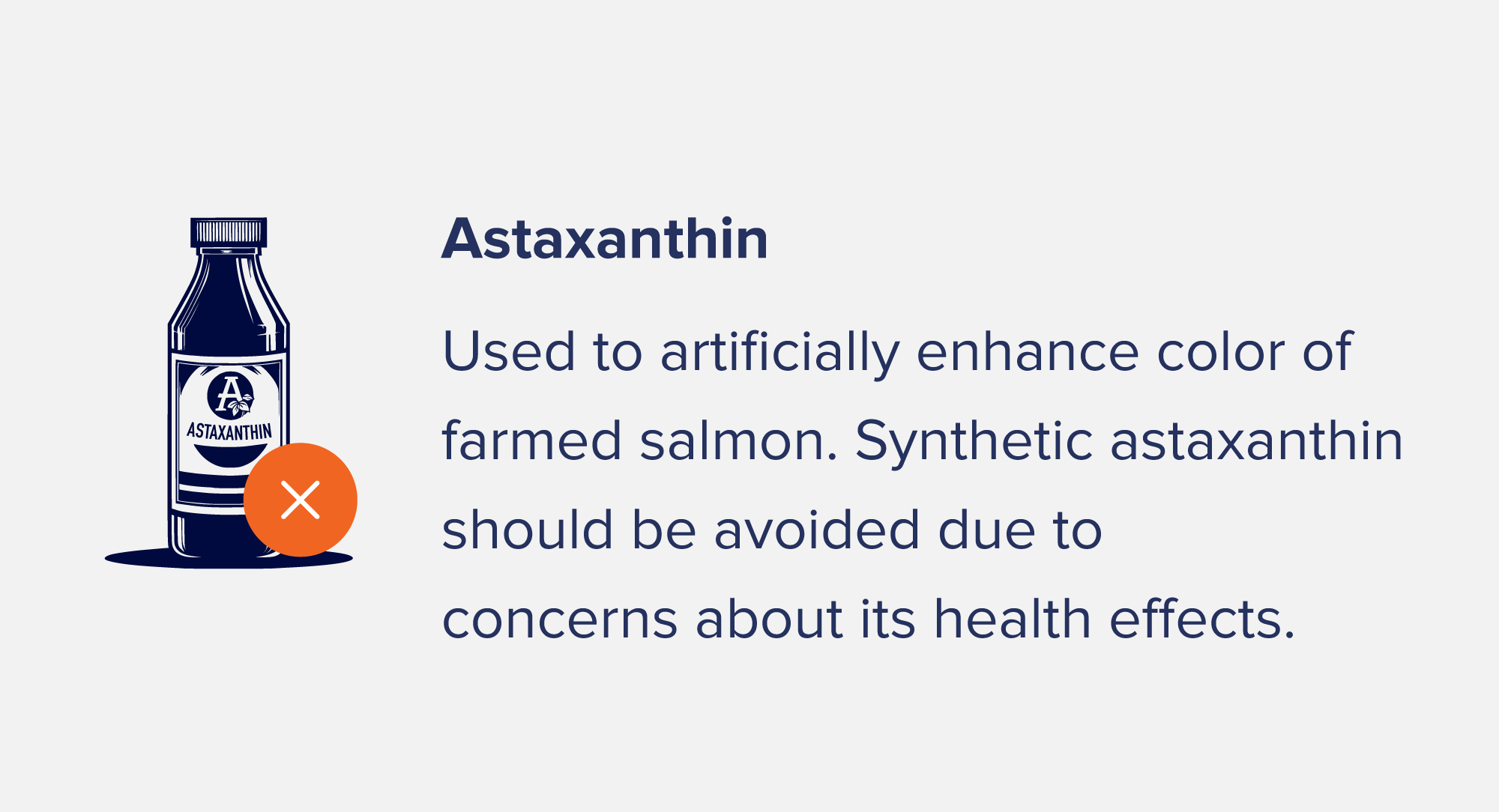
Before we explain what astaxanthin is, we want to provide some context for its use in the food supply––in particular the farmed salmon industry.
Though America has been a pioneer for farm-raised salmon, the industry is rife with concerns for the health of salmon, the consumers who eventually eat them, and the planet.
The reality is that farm-raised salmon are kept in large numbers in too-small pens, which leads to a variety of health issues, including rampant bacterial infections and parasites.
In addition to antibiotics, astaxanthin is also added to their feed.
Astaxanthin is a chemical compound used in the grain feed that is fed to farmed salmon to give the fish a more natural vibrant pink color since this diet is not comprised of ingredients they would naturally consume in the wild.
Though the natural version of astaxanthin is a beneficial compound for humans and a highly powerful antioxidant, the same cannot yet be said for the synthetic version.
The synthetic version of astaxanthin is banned from use in the EU, Australia, and New Zealand.
This is primarily out of an abundance of caution since, currently, there is little evidence to support the claims that this chemical is harmful.
However, this doesn’t mean farm-raised salmon using natural astaxanthin should get the green light.
Considering the sustainability component and how the existence of salmon farms can heavily impact local waters, there is more than one good reason to say no to astaxanthin.
There are two straightforward ways to avoid these ingredients:
By reading food labels, you can check the ingredients list for things you’d prefer to leave out of your diet.
However, the easiest way to avoid them is to make most of your meals from whole foods, which is just another way to say minimally processed foods.
Basically, these are the items you’ll find around the borders of the grocery store. This is why people say to shop around the periphery for most of your food shopping!
These are going to be your proteins (meat, dairy, eggs), vegetables, fruits, and whole grains such as oats, rice, and legumes.
Sure, you’re always going to need to get one or two things from the middle aisles (canned food, grains, broth, nut butter, etc.), but by sticking to the edges, you’ll cut down on food additives (not to mention the time spent reading labels).
Yes, this does mean it might take more time to prep your meals, but if you’re on a journey to eat a bit more healthily, this is a necessary “evil.”
Luckily, there are thousands of recipes out there that are both quick and healthy to make.
All foods technically contain chemicals! However, highly processed foods typically contain the most food additives, which are used to enhance flavor and texture, improve appearance, and increase shelf life.
No food sold in grocery stores is going to be toxic for the average consumer unless you are eating huge quantities of it. Even water is “toxic” when consumed in high enough doses. Furthermore, we caution against listening to rhetoric peddled online that certain foods are “bad,” “dirty,” or “toxic” for you. This is usually a good sign someone is trying to sell you something rather than give you accurate, scientifically backed information. With that said, if you want to eat more healthily, add more whole foods to your diet, such as lean proteins, vegetables, fruits, and whole grains.
The safest junk food is any kind you eat in moderation. Eating chips and cookies every day isn’t healthy, no matter if they have three or 20 ingredients. While there are certainly some ingredients that you should look out for, most studies indicate that they are safe when consumed in moderation. There is also “junk food” with fewer ingredients that could be a healthier way to satisfy your guilty pleasures without consuming additives. Just remember even these healthier options can have excess calories and might be low in essential nutrients. This means you’ll want to eat these in moderation, too.